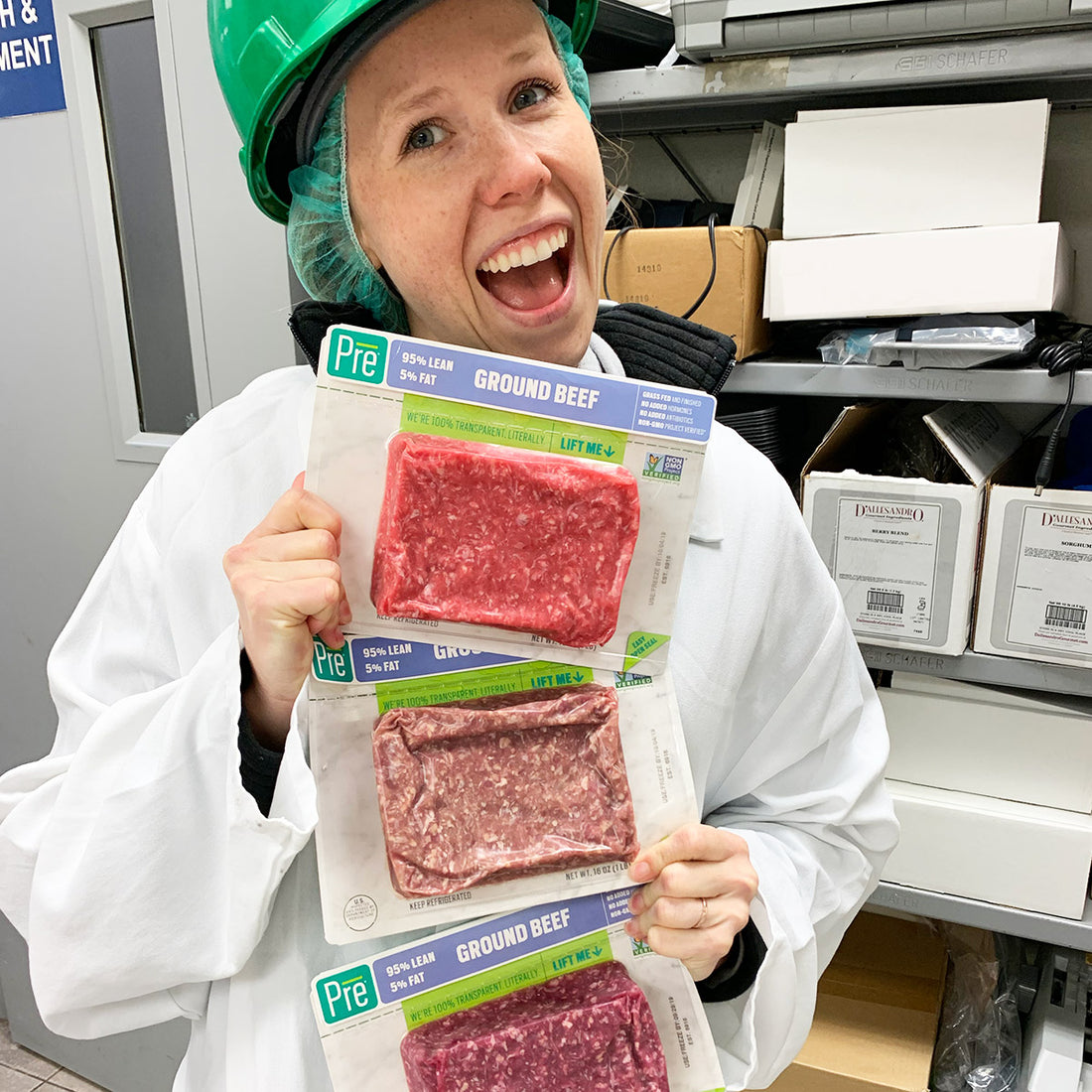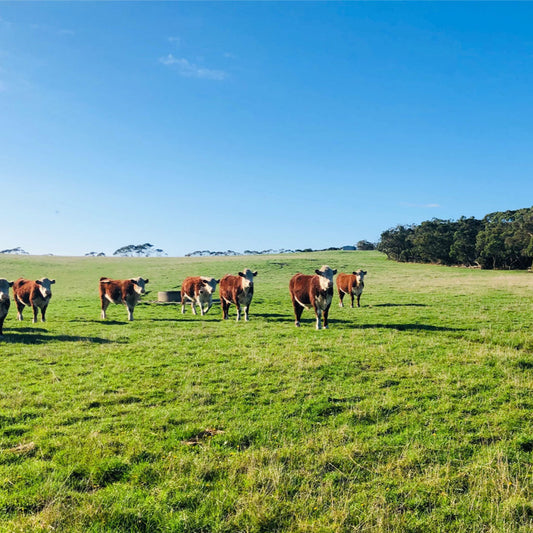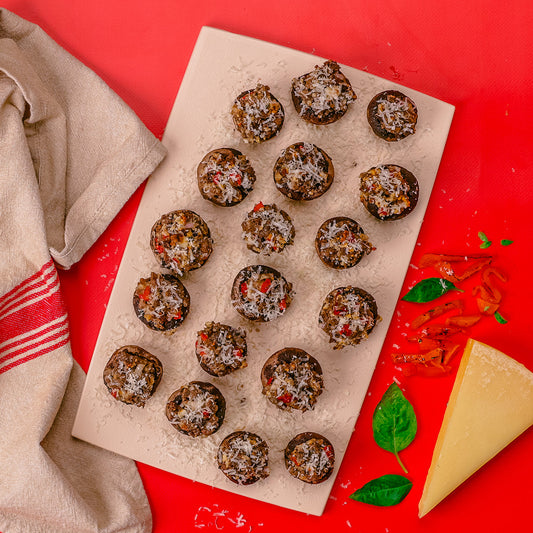
Purple Meat, Steak & Beef – Why Beef Changes Color
Do you ever wonder why our beef is purple in the package?
It’s not so often that you see a purple meat. Like purple colored New York strip or ribeye at the grocery store. But if you have shopped Pre® grass fed and finished beef, you’re probably familiar with the purple beef we offer. Most of the steaks and ground beef you come across in the store are red in color and psychologically, we tend to think the red color is more appealing. Keeping meat fresh is something we work hard towards and are constantly monitoring at Pre. One of the more natural ways to combat spoilage is by vacuum-sealing our products, removing all of the oxygen. This returns the beef to its natural state and in turn keeps the beef fresher, longer.
We made a quick video touching on this on Instagram, watch it here.
The color of fresh beef is determined by myoglobin. This is a protein found in muscle tissue and is normally purple in color. It changes color depending on how much oxygen it is exposed to. When exposed, the iron in the muscle starts to react and become unstable, turning either red or brown depending on the level of oxygen present. This is why beef changes color.
We asked Julie, our Pre® Quality Manager to talk us through this in more detail, watch her discuss the different meat colors in our video below:
There are 3 main states for this color change:
- STATE 1: Oxymyoglobin Atmospheric Oxygen (O2) Present (bright red in color)
- STATE 2: Metmyoglobin Low Oxygen (O2) Partial Pressure (brown in color)
- STATE 3: Deoxymyoglobin No Oxygen (O2) Present (purple in color)

So why does most packaged beef look red?
In an overwrap tray, oxygen is present due to the open nature of the package with the surrounding air we breathe. In MAP packaging, gasses such oxygen, carbon dioxide, and nitrogen are added in order to keep a bright red color. This is called “Oxymyoglobin”.
When you open Pre’s vacuum-sealed package, you will find our Pre beef changes to a bright red color. Our beef is a deep purple color in the package. Preserving freshness means removing all of the oxygen from the packaging! When you open up the package, you're exposing it to oxygen and turns bright red – that’s what we call blooming. Because we seal our meat airtight, you get to see this beautiful transformation.
You will also notice this phenomenon behind the butcher counter or in the trays, when some steaks overlap. The overlapping steak will leave a brown color because it was limiting the oxygen exposure to the meat. That state is called “metmyoglobin” as referred to in the visual below.

The presence of oxygen will gradually deteriorate meat and oxidize fat. In MAP packaging (Modified Atmosphere Packaging) additional gasses are added to prolong freshness. With Pre,® we do not add any gasses to help extend freshness, we just remove as much air as possible.
The Pre® Difference
We tested out our steak packaging in a 5-day fridge test alongside a butcher paper wrapped steak. See the test results here. Learn more about our sourcing and expiration dates and if you don’t see Pre in your local grocery store, please download this form and give it to the meat manager so that we can be near you soon!





